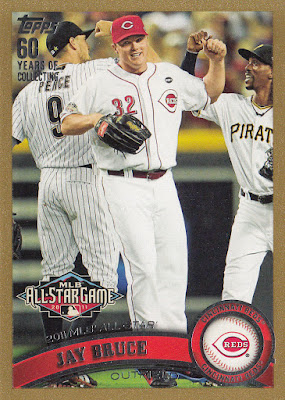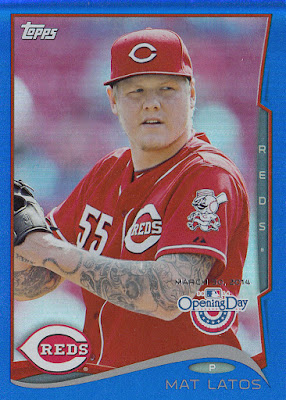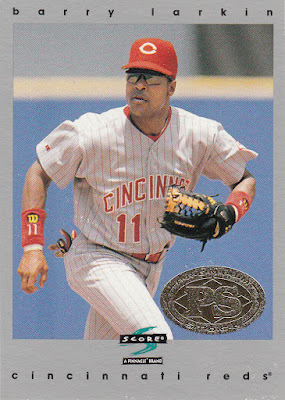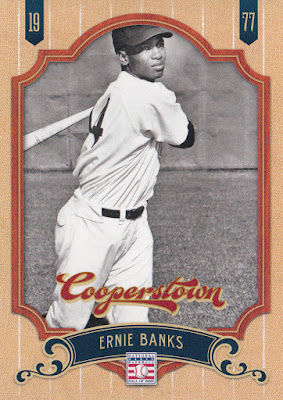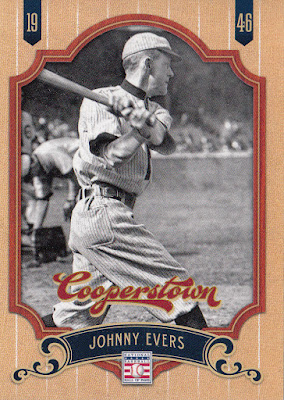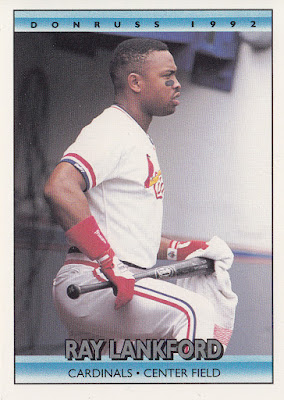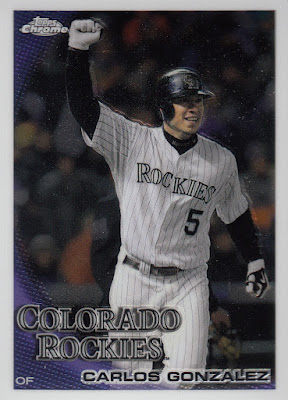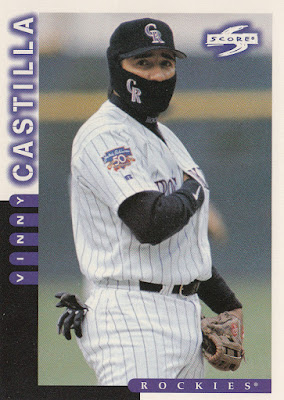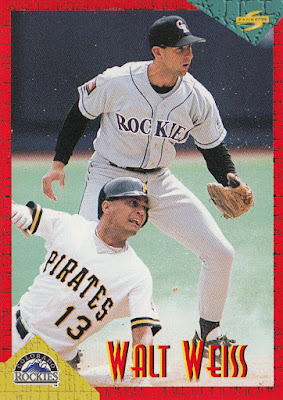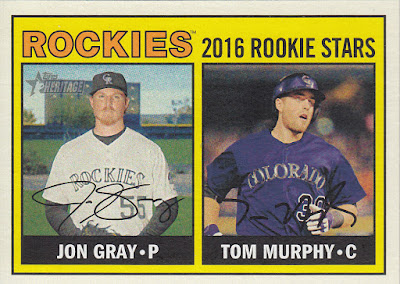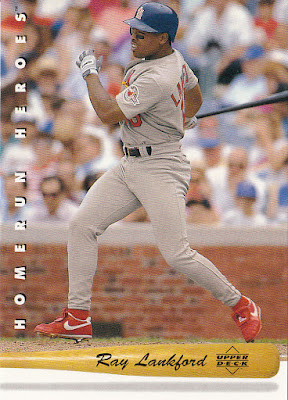He had plenty of stories to tell about that, and who his favorite players were to throw to. John Vander Wal was mentioned, as well as lots of the inaugural Rockies. But most of the discussion centered around Sumner's new book, Independence, Mantle, and Miss Able, a baseball-focused history of Sumner's birthplace, Independence, Kansas. It's a town of about 10,000 in the southeast corner of the state, and has been responsible for more than its share of baseball history and well-known citizens.
One of two photos on the cover is a shot of a baseball game being played under the lights. The minor league stadium in Independence is where, in 1930, the first night game in organized baseball was played. There are many claims to this innovation, but all of the preceding games, some as early as the 1890s, were either under temporary lights, in an exhibition game, or not considered part of "Organized Baseball."
The Major Leagues followed suit about midway through the decade, but the idea was pioneered in Independence, KS. Of course, nightly attendance shot way up, as you could now catch a ballgame after a long workday.
Sumner was kind enough to pose for a #WalletCard shot along with my signed copy of his book.
The other photo on there is of the 1949 Independence Yankees, a Class-D team in the Yankees farm system, part of the Kansas-Oklahoma-Missouri (KOM) League. You might spot a familiar face on that photo. In the front row on the far right is a young Mickey Mantle, playing in his first season of professional ball.
Yes, The Mick kicked off his legendary career in the sleepy town of Independence, hitting .313 in his first season before a promotion to Class-C Joplin in 1950.
A Class-D team in a regional league isn't exactly the lap of luxury, so players had to live in local residences with a roommate. Bob Mallon (2nd from left in back row), a pitcher who played two seasons for Independence before running into arm trouble and leaving professional baseball, was present at the book signing, and had a few stories of his own. Mallon and Mantle were roommates during that 1949 season, even sharing a bed in another player's home, believe it or not.
These low-level minor league teams still need to be managed, and Independence had some great ones. Burleigh Grimes, the last pitcher that was grandfathered into being allowed to throw a spitball, managed in 1948. Harry Craft took over in 1949 to oversee Mantle's development. Craft had an average playing career, but managed Mantle, Roger Maris about a decade later, and the inaugural Houston Colt .45s in the early 1960s.
As Sumner writes, numerous big leaguers came through Independence, not just Mickey Mantle. Ralph Terry, originally a catcher, pitched for the Independence Indians in 1953. He'd later find success with the Major League-level Yankees playing alongside Mickey Mantle, even winning the World Series MVP award in 1962.
As it is today, minor league baseball was not exactly a lucrative profession. Terry got a job with Sinclair Oil, one of the major local employers. More on that later.
Other players to come through included Harry Bright, who reached his only World Series as a Yankee in 1963. Sandy Koufax struck out Bright for his 15th strikeout in Game 1, which was at that time a single-game World Series record until Bob Gibson broke it with 17 just five years later. As he puts it, "I wait 17 years to get into a World Series, then when I finally get there, 69,000 people are yelling — yelling for me to strike out!"
Forest Glenn Wright isn't a well-known name, but he played for the Class-D Independence Producers way back in 1921. He'd have his best year in 1925 for the Pittsburgh Pirates, becoming one of the very few players to turn an unassisted triple play, and one of only three who did it in the 9th inning. He'd help the Pirates win the World Series that year, the last one they'd win until 1960.
Bill Virdon, an Independence Yankee in 1950, spent several years in their farm system. He was an outfielder, but with Mantle, Gene Woodling, and Hank Bauer in the Yankees outfield, he'd need to find another way to get called up. He was traded to the Cardinals with a few other players for Enos Slaughter (even then, the Yankees were giving up promising minor leaguers for established stars). Virdon was named the 1955 NL Rookie of the Year for St. Louis, only to be traded once again in 1956, this time to the Pirates.
Virdon got his revenge on the Yankees, though. The Pirates were down 7-4 going into the 8th inning of 1960's World Series Game 7. Virdon got on base for his second hit of the day, and scored one of the five runs the Pirates put up that inning to take the lead.
The Yankees always seem to have some postseason magic in the 9th inning, and Mantle and Yogi Berra both plated runners to tie it up facing Harvey Haddix. Yes, that same Harvey Haddix who pitched 12 innings of perfect ball in 1959 but still lost the game in the 13th.
Of course, the Pirates weren't done. Bill Mazeroski, the leadoff hitter in the bottom of the 9th, drilled one off of Ralph Terry over the head of Yogi Berra. Just off-camera in center field was Mickey Mantle, so that game was a real who's who of ex-Independence players. Mazeroski's homer remains the only walkoff home run in any World Series Game 7.
Judging by the play-by-play, that must have been a heck of a game to watch.
That one didn't go his way, but Mickey Mantle was no stranger to home runs. His first professional homer came in Independence. The ball was never found, and legend has it that it landed on Monkey Island, an enclosure at the zoo beyond the center field wall.
That spot has its own claim to fame, as it is the origin of an early group of NASA's rhesus monkey astronauts. Neither NASA nor Russia were quite to the point of human spaceflight in 1958, but there was lots of preparation underway for that eventuality. If, of course, spaceflight was survivable. Some monkeys had seemed to survive the flight above 100 kilometers of altitude, but perished due to mechanical problems. It was still unknown whether a mammal could survive in weightlessness for that long, and whether a rocket could reliably be up to such a task.
In May 1959, Miss Abel, the nickname of the Independence monkey that had "The Right Stuff" was sent up in a rocket with a squirrel monkey from Peru, Miss Baker. The two primates survived the flight, and shot to stardom. Literally, I suppose.
Miss Abel died a few days later due to complications from surgery, but Miss Baker survived to see the space program reach orbital flight, a handful of trips to the moon, and even the space shuttle. Of course, she probably didn't realize any of that was going on, but still. I guess that's why we pick monkeys to do these things first.
Independence, Kansas had its share of famous residents that never left earth or played pro ball, and lots of them are profiled in the book. Laura Ingalls Wilder lived near there in 1870 as a young child. That's alluded to in a pilot episode of Little House on the Prairie, when grizzled old Mr. Edwards drops by the Ingalls' cabin after crossing the Verdigris River on a snowy Christmas after running into Santa Claus in Independence.
Vivian Vance, who played Ethel Mertz on I Love Lucy, grew up in Independence, as did Harry Sinclair, the man who gave his name to the Sinclair Oil Corporation, the same company that employed Ralph Terry on non-game days.
If you remember your history class, Harry Sinclair was caught on the wrong side of the Teapot Dome Scandal, where his and other oil companies were given leasing rights to an oil field without a proper bidding process. President Warren G. Harding is named as one of the worst presidents in history for this and other scandals that occurred during his term. Sinclair actually spent six months in jail, though it was for jury tampering, not due to the scandal itself.
Prior to that, Sinclair was one of the founding members of the short-lived Federal League. Though it only existed from 1913-1915, it planted the seed of free agency that took decades to germinate. Its lawsuit against the National League led to an exemption from antitrust law, something that largely exists throughout professional sports today. It also gave us Wrigley Field, then known as Weeghman Park, which was built for the Chicago Whales, the Windy City's entry in the Federal League. It is recognized as a Major League, but wasn't canonized until 1968.
Overall, this was a fun and quick read. It could use a bit more editing and polishing, but still shed lots of light on a surprising amount of history in such a small town. It's only a couple bucks in Kindle format at the moment, if you don't wish to go for a physical copy. But if you happen to meet the author, a signed Kindle just isn't the same.









